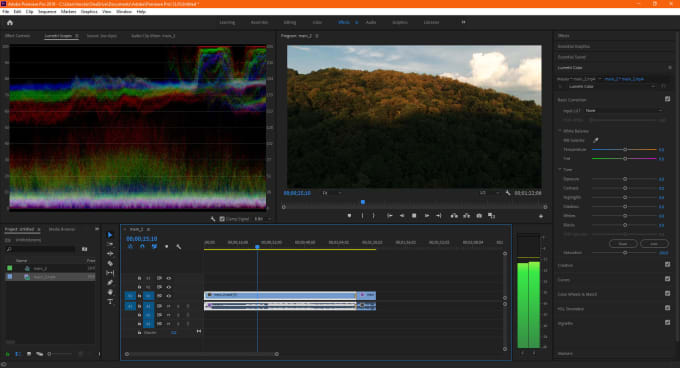To the beginner, film and video altering seems like one of those totally specialized subjects, just conceivably fascinating to individuals with exceptionally intelligent and down to business minds, much like designers. Dreams of darkrooms and clean looking studios loaded up with a wide range of baffling mechanical gear, where moves of film negatives are poured over and investigated by genuine looking individuals, at that point diced, cut and grafted back together, to some degree finishes the general mental picture. Clinical, obvious, exact. Yet, in fact, film and video altering is considerably more than celluloid or electronic picture medical procedure. Actually, it’s a remarkable inverse.

Exclusive on bradybeahler
Consider it along these lines; somebody shoots a video of your preferred cousin’s wedding. The finished result is a decent, for the most part constant documentation of the occasion, with unexpected beginnings and stops to a great extent when the fundamental action changes or moves to an alternate territory or area that requires an alternate “shot”. The final product is an accumulation of pictures and sound that is impressively better and ideally more paramount and fulfilling than still photos, yet at the same time leaves a great deal to be wanted.
Notwithstanding, if a similar crude video was set under the control of a talented proofreader, the final product would be very unique. The subsequent piece would recount to the account of the finish of your cousin’s three-year sentiment, as described by a few key relatives. It would catch and pass on to the survey crowd the couple’s big day feelings of affection, and euphoria and gratefulness for each other and family, expectation of the new life the couple plans to make together, a touch of bitterness for the existence they are perpetually deserting, etc. At the end of the day, in the hands of a gifted manager, the product video turns into a “story” with a start, center and end; a firm summation of the couple’s sentiment. A day in the life…
What the vast majority not in the film or video industry don’t understand is that film and video altering is a work of art. Altering is seemingly the most significant component of film or video creation. It is in the altering, the craft of organizing pictures and discourse and sounds, that a completed movie item can impart a story initially imagined by its author, and in this manner by an executive and maker to its target group. Days, weeks even a very long time of shots caught on film or video must be examined, deciphered broke down lastly refined into a story enduring a small amount of the time it took to catch everything.
Individuals outside the film causing industry to have practically zero clue about “after creation” and the vital part it plays in the creation of a film or video work. It is a direct result of the huge significance of this period of movie and video creation that the procedure sets aside an all-encompassing measure of effort to finish.
Considerably more that cutting and grafting bits of cellophane together or simply organizing video arrangement, altering is a brilliant mix of specialized information and aptitude joined with a craftsman’s innovativeness and craftsmanship. It is moving, including, erasing, comparing, scenes, sounds, and pictures to create film shots and video cuts into a specific setting, make explicit symbolism and timing, bring out specific feeling, make explicit symbolism and form them into a story.
Film altering as an art started in the late 1890’s in the most punctual long periods of movies. In the mediating a very long time among at that point and now, anybody keen on finding out about film or video altering, typically went to school courses or one of various legitimate film schools to get familiar with the specialty.
In his book, “The Technique Of Film And Video Editing”, considered outstanding amongst other instructing and preparing apparatuses for chiefs , Ken Dancyger features the historical backdrop of film altering from its roots. He talks explicitly about the altering of incredible cinematographers, for example, Alfred Hitchcock and Charlie Chaplin and Buster Keaton, investigating the central standards of film and video altering. He talks about thoughts, practices and styles and decisions for editors with regards to hypothesis, the historical backdrop of film and video altering, and practice. He additionally talks about new innovation and the effect it has as far as the craft of altering.
Probably the best change to film and video altering happened with the presentation of PC altering. Hand cutting and joining of film, just as the more convoluted, mechanical and “direct” procedure of video altering, got repetitive and obsolete with the coming of PC altering in the mid 1990’s. Altering on PCs offered ascend to a totally different inventiveness prized by film editors, just as lower expenses and significantly more productivity as far as video altering.
Regardless of whether for film or video, the altering procedure happens in three fundamental advances. These incorporate catch, the altering procedure itself, and placing the item in a distributable structure. During the catch stage, the genuine “shots” or picture pictures are arranged into an organization from which they can be altered. During the real altering process, the assortment of shots are composed in an ideal grouping and sound is included through “sound blending” until they structure a far reaching storyline. When this has been practiced, the film or video is settled in the ideal organization whether film or top notch video for dispersion.
